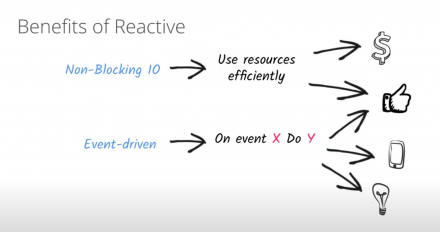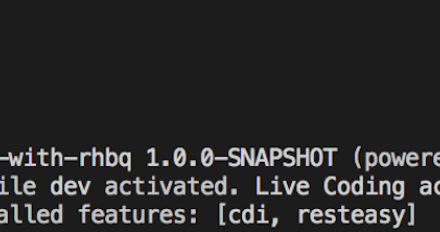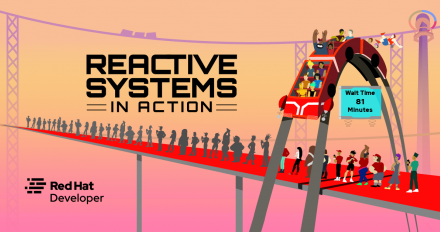
Building reactive systems with Node.js
Find out why reactive systems are especially easy to implement with Node.js, then walk through a reactive system built with Node.js and Apache Kafka.

Find out why reactive systems are especially easy to implement with Node.js, then walk through a reactive system built with Node.js and Apache Kafka.

Find out what's new with the Future API and promises in Vert.x 4.0, then get started with distributed tracing and deploying Vert.x on Red Hat OpenShift.

In this DevNation Tech Talk, we introduce the Mutiny reactive programming library and show how Quarkus and Mutiny simplify reactive application development.

The Red Hat build of Quarkus is now available through Red Hat Runtimes, bringing full support that includes an active community, continuous updates, and a fast release cadence.

Create prepared statements and collector queries with the Fluent API and Red Hat's build of Eclipse Vert.x version 3.9, even with multiple interactions.

We take a deep dive into how Quarkus unifies imperative and reactive programming models and how Java developers can take advantage of it.

The latest update to Red Hat Runtimes has arrived and now supports Eclipse Vert.x 3.8.1; learn about the new features here.

Learn all about reactive programming and why it matters in this video presentation from Red Hat's Edson Yanaga.

Reactive programming is a great way to work with microservices that pass asynchronous data to each other. See it in action with Coderland's latest ride.

This video shows you how to deploy and run the Reactica roller coaster.

A brief introduction to reactive programming and the Reactica roller coaster, the latest attraction at Coderland.

This video is a short introduction to reactive programming and the Eclipse Vert.x toolkit.

This video is a short overview of the Reactica architecture and the middleware that supports it.

Get details on the latest Quarkus release, with 125+ changes including new features, bug fixes, and documentation updates.

You can write more-readable code using Kotlin's coroutines feature. in my opinion, coroutines provide a cleaner approach than reactive programming.

In the last post, we saw how Eclipse Vert.x can interact with a database. To tame the asynchronous nature of Vert.x, we used Future objects. In this post, we are going to see another way to manage asynchronous code: reactive programming. We will see how Vert.x combined with Reactive eXtensions gives you superpowers.

Red Hat Summit 2018 will focus on modern application development, including cloud-native applications, reactive microservices, Eclipse microprofile with Wildfly Swarm, Node.js and Vert.x on Red Hat OpenShift Application Runtimes

In this post, we are going to enhance our Eclipse Vert.x application we created in the previous post to support external configuration, and then show how to deal with different configuration sources.

DevNation Live session - The Reactive landscape

